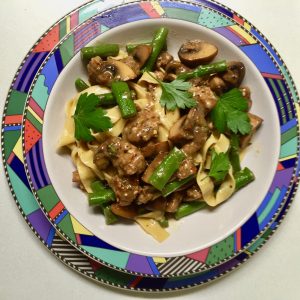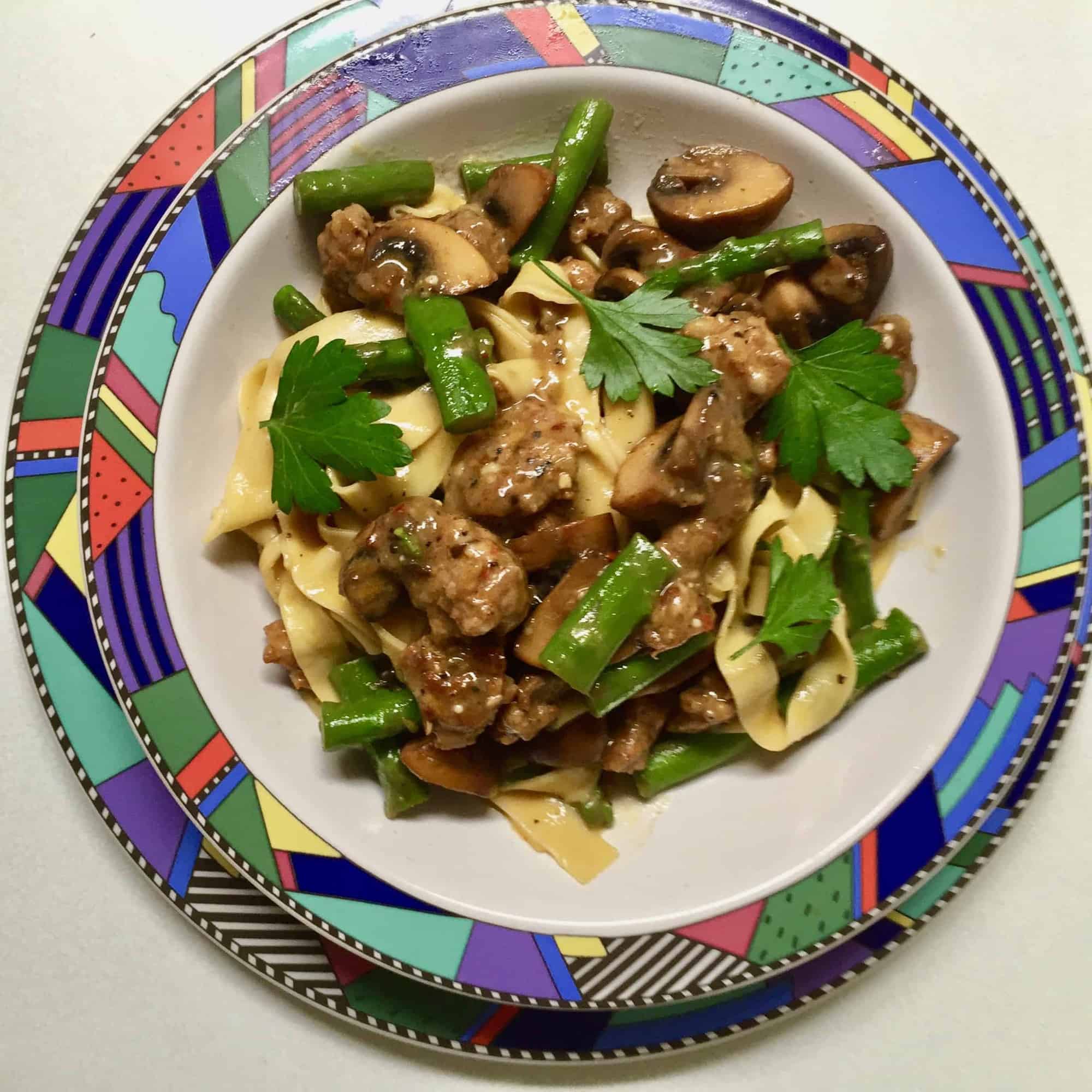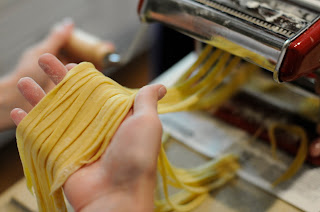 A great bowl of pasta is one of my favorite comfort dishes. I must admit that this particular variation hits the mark. The fresh asparagus and mushrooms seem made for each other and for the Italian hot sausage I combined them with. There’s cheese too—two kinds that bring the zip of Parmesan together with the sweetness of Fontina. Both cheeses melt into the pan sauce. And the couple of tablespoons of butter stirred into the sauce added a rich smoothness that I found irresistible. But there is one other ingredient that sets this dish apart: Fresh Pasta. To me, the best pasta is fresh pasta. I wish I could say I made my own but I have not. Instead I can find really good fresh pasta in the supermarket. But is fresh pasta really better than dried? Intuitively, fresh should better. After all, it’s likely to be locally made like mine. Dried pasta could have been shipped thousands of miles or sat on store shelves for months. But the real truth is, fresh pasta really isn’t better than dried: they’re just different.
A great bowl of pasta is one of my favorite comfort dishes. I must admit that this particular variation hits the mark. The fresh asparagus and mushrooms seem made for each other and for the Italian hot sausage I combined them with. There’s cheese too—two kinds that bring the zip of Parmesan together with the sweetness of Fontina. Both cheeses melt into the pan sauce. And the couple of tablespoons of butter stirred into the sauce added a rich smoothness that I found irresistible. But there is one other ingredient that sets this dish apart: Fresh Pasta. To me, the best pasta is fresh pasta. I wish I could say I made my own but I have not. Instead I can find really good fresh pasta in the supermarket. But is fresh pasta really better than dried? Intuitively, fresh should better. After all, it’s likely to be locally made like mine. Dried pasta could have been shipped thousands of miles or sat on store shelves for months. But the real truth is, fresh pasta really isn’t better than dried: they’re just different. Fresh pasta is made from simple dough: Eggs and flour. In Italy that flour is labelled “OO” as it is very fine and high in gluten. The dough is kneaded like bread and then passed through a set of rollers to whatever thickness—or thinness—is desired. After that is it is cut into long noodles or formed and stuffed into pastas like Tortellini and Ravioli. Experts say that fresh pasta is best served with delicate sauces so that the texture of the pasta takes a front seat. Fettucine Alfredo is living proof of how that particular preparation is so far superior when fresh pasta is put into use.
What about Dry Pasta? It is made with finely ground semolina flour and
 |
| Machine-made Pasta drying. |
water. Eggs aren’t usually used at all. The flour and water are mixed into a paste and the paste is put through molds and cut into every pasta shape you can imagine. Then the pasta is dried at a very low temperature for several days until all the moisture has evaporated. It can then be stored almost indefinitely. Did you ever check the expiration date on a package of pasta? My most recent purchase, De Cecco Gemelli, has a “Best By” date in July 2018. Oricchiette from Trader Joe’s has no date at all. Dry pasta is best suited for hearty dishes like ragu sauces, soups and casseroles since it will hold up better with their most robust ingredients. I like this dish so much, the choice is up to you. Either fresh or dried pasta will yield a flavor-packed Spring dinner you can get on the table in under 30 minutes. Even allowing for the longer time it takes to cook dried pasta. Here is the recipe:


















This looks so tempting! Never tried using Fontina cheese.
Thank you so much Corine. Fontina is such a great melting cheese that it simply disappears into the sauce, giving it body and flavor.